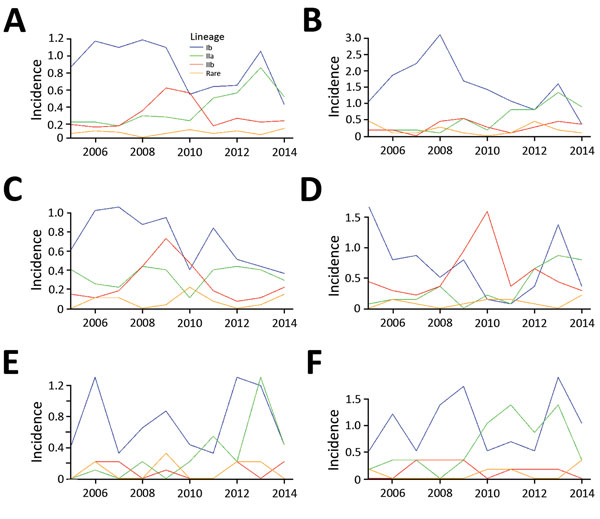Volume 24, Number 1—January 2018
Research
Geogenomic Segregation and Temporal Trends of Human Pathogenic Escherichia coli O157:H7, Washington, USA, 2005–20141
Figure 3

Figure 3. Annual incidence (per 100,000 population) of reported Escherichia coli O157:H7 cases by phylogenetic lineage, Washington, USA, 2005–2014. A) Statewide; B) northwest region; C) Seattle–Tacoma region; D) southwest region; E) northeast region; F) south-central region. Regions were defined according to major demographic characteristics and patterns of segregation observed in analyses for the whole period. The northwest region experienced the highest peak incidence. The Seattle–Tacoma region and the northeast region experienced the lowest incidences. “Rare” indicates 12 different clinically rare lineages.
1Preliminary results from this study were presented at the International Meeting on Emerging Diseases and Surveillance (IMED), November 4–7, 2016, Vienna, Austria.